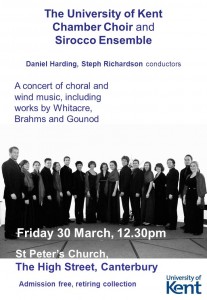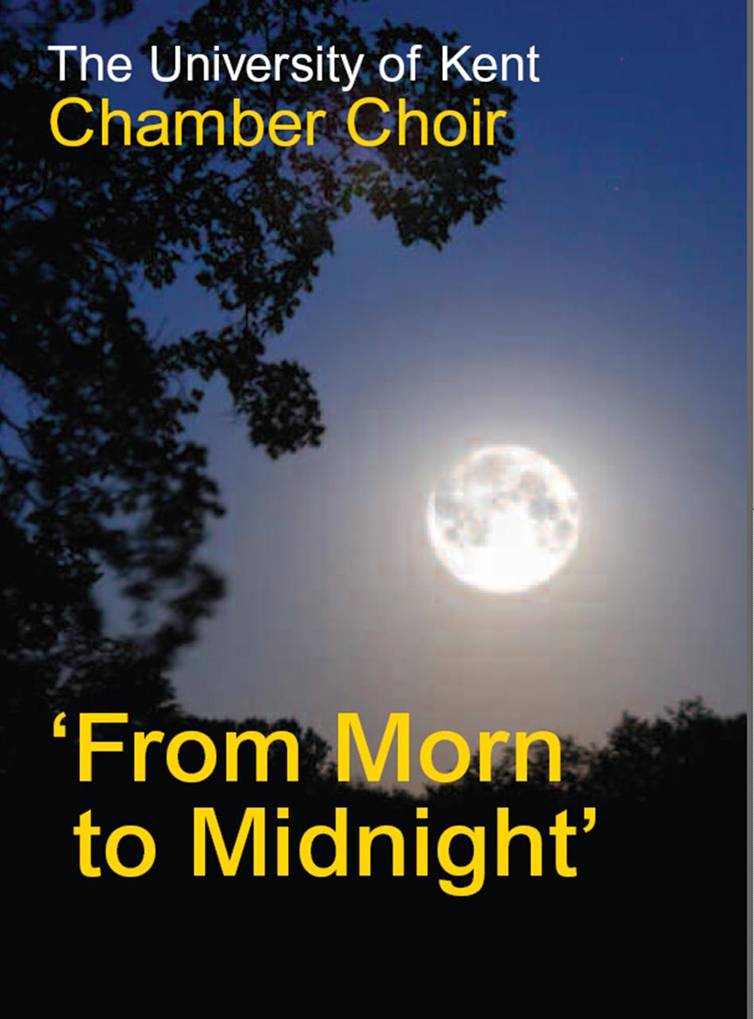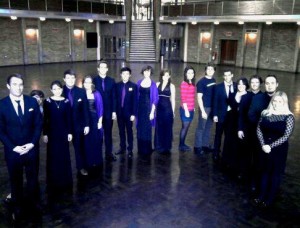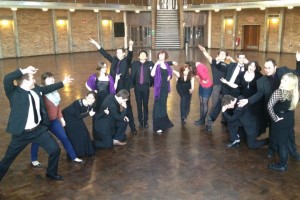The annual University Carol Service in Canterbury Cathedral is one of the high points of the cultural year, a moment when the University community comes together to celebrate not just the Christmas message, but also its own diversity; with readers, musicians and participants from across the range of denominations and countries, a rich, international pot pourri that gives Kent, the European university, a unique identity in the UK.
The Chamber Choir, itself a microcosm of the range of countries, cultures and beliefs that find a footing at the University, spent the afternoon rehearsing in the Cathedral before the service, exploring some novel ways of standing (this has become something of an idée fixe with the group this year: when a choir is this good, the possibilities for sonic experimentation begin to widen in an exciting fashion).

Eyes left...and right...
One of the problems we found with singing our first two carols at the great West End of the Cathedral is that, in facing directly down the Nave, there is no support for the sound at all; no reflective surfaces giving back a measure of reverberation. After some experiments, we eventually settled on the way of standing (pictured), which allowed some of the sound to be given back from the ancient stone pillars of the Cathedral; such is the Choir’s confidence in itself that it didn’t need to be directed – in listening to one another (standing, as is now customary, in mixed-group formation), the group could hear something of itself given back from the stonework. As bass singer Matt remarked afterwards, “Having sung in mixed formation this year, I don’t ever want to go back.’’
The greatest challenge to the group wasn’t actually singing; rather, it was in organising its processing, in order to be able to move down the Nave to Once in Royal and end up in the correct formation on the steps in front of the rood screen at the other end. This led to some serious rehearsing of things such as standing and walking. But, once we’d worked out who moved when and in which order, and practiced walking with stately tread down the Nave (but still quick enough to get to into place before the carol finished – now that would have been embarrassing…), we rehearsed Remember, O Thou Man and our sections of the congregational carols standing on the steps.
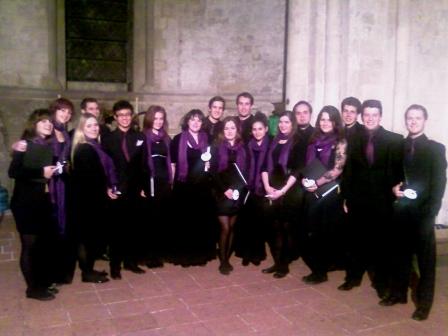
Warming up
After a decidedly indulgent dinner at an adjacent hostelry, we returned to the Cathedral, and had a half-hour warm-up in a tiny ante-chapel near to the East end, well away from the congregation arriving early and with our rehearsing covered up by the robust playing of the Salvation Army’s pre-service carols. This turned out to be a lively and entertaining session, in which Steph led the group through some of the customary warm-ups and tongue-twisters (which were as nothing, it turned out, compared to the linguistic minefield of singing Silent Night in a variety of unfamiliar languages; as a way of celebrating its international identity, the carol service includes each year this piece with verses in several different languages). We then explored different dynamics, singing in a circle facing outwards, singing crouched or standing, and generally, well, having a great time (yet productive too!).
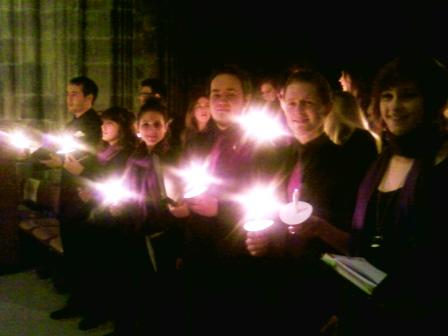 We then lined up – in our by-now well-rehearsed processional ranks – and filed down to the West end; our candles were lit, the congregation were welcomed, the lights of the Cathedral were extinguished, and then Steph led the group in Carol of the Bells. As the echoes died away deep in the East of the building, the congregation stood, and second-year soprano Marina lifted her voice to the great roof in the soaring opening of Once in Royal David’s City, before the Choir clothed the second verse in the rich harmonies of the tutti section.
We then lined up – in our by-now well-rehearsed processional ranks – and filed down to the West end; our candles were lit, the congregation were welcomed, the lights of the Cathedral were extinguished, and then Steph led the group in Carol of the Bells. As the echoes died away deep in the East of the building, the congregation stood, and second-year soprano Marina lifted her voice to the great roof in the soaring opening of Once in Royal David’s City, before the Choir clothed the second verse in the rich harmonies of the tutti section.
 Listening back to some of the rehearsal recording I’ve taken over the course of this term, it struck me that there is a great deal of singing, a lot of hard work, and an equal measure of laughter and mirth. I take this as a good sign; the group are, after all, there to have fun as much as they are to work and develop as an ensemble. There’s a genuine sense of trust and confidence in one another that has developed over the term, and they have become not just a group of students getting together to sing once a week, but a committed group of friends, with whom it’s been an unmitigated pleasure and a privilege to work this term.
Listening back to some of the rehearsal recording I’ve taken over the course of this term, it struck me that there is a great deal of singing, a lot of hard work, and an equal measure of laughter and mirth. I take this as a good sign; the group are, after all, there to have fun as much as they are to work and develop as an ensemble. There’s a genuine sense of trust and confidence in one another that has developed over the term, and they have become not just a group of students getting together to sing once a week, but a committed group of friends, with whom it’s been an unmitigated pleasure and a privilege to work this term.
As the candles filed out of the Cathedral after the service and into the night, the words of Steve in the tenors came to mind: ‘’I’m starting to feel really Christmassy now!’’ Just for a moment, at the very start when the Cathedral was hushed and the Choir began to sing, the orange glow of the dancing candles lit up not a group of singers, but a window into a deeper community, a miniature reflection of what life at the University is all about: different peoples coming together, joining in a communal enterprise, and becoming fast friends in the process.
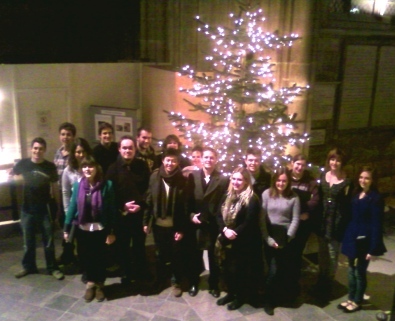 Merry Christmas.
Merry Christmas.


